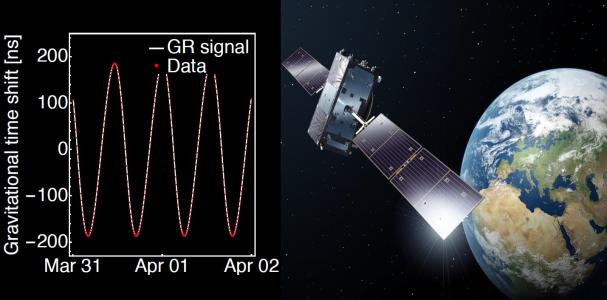General Relativity Experiment with Galileo satellites 5 and 6 (GREAT)

The GREAT project provides an improved test of Einstein's theory of general telativity by analysing the relativistic gravitational redshift as observed in the clock data from GSAT-0201 and GSAT-0202. These satellites have been injected into highly eccentric orbits following a launch mishap, providing us with the unique chance to perform an important test of fundamental physics.
Gravitational redshift describes the slowing down of the ticking rate that a clock experiences in a gravitational potential. This effect is a fundamental aspect of Einstein's theory of general relativity. Its universal validity is a direct manifestation of Einstein's equivalence principle, which the theory is built upon. It is thus of fundamental importance to test gravitational redshift as one of the cornerstones of general relativity and thus of our current understanding of gravity and space-time itself. The most accurate previous test of the gravitational redshift dates back to 1976, when R. Vessot and M. Levine launched the Gravity Probe A mission. This mission sent a hydrogen maser onboard a Scout rocket on a trajectory reaching 10000 km in altitude. During the flight they could perform an accurate frequency comparison to a ground based maser and verify the total relativistic frequency shift to within 7x10-5 total uncertainty. The effect they measured included both the gravitational redshift and the relativistic Doppler effect.
